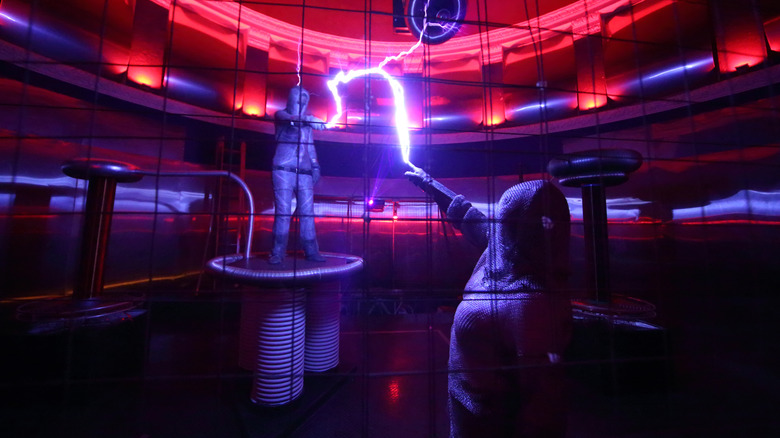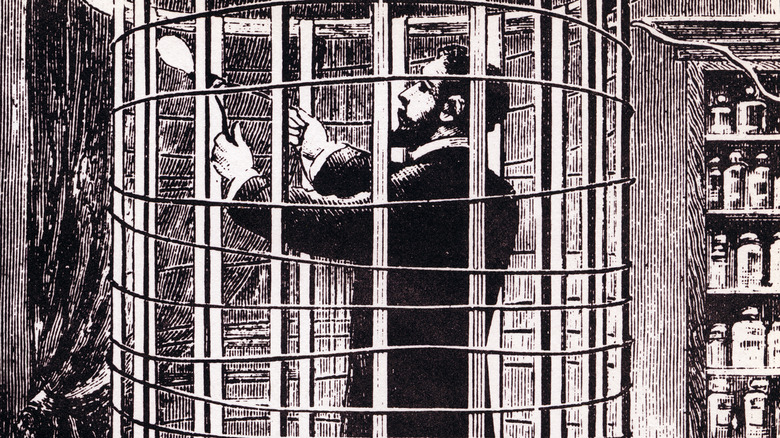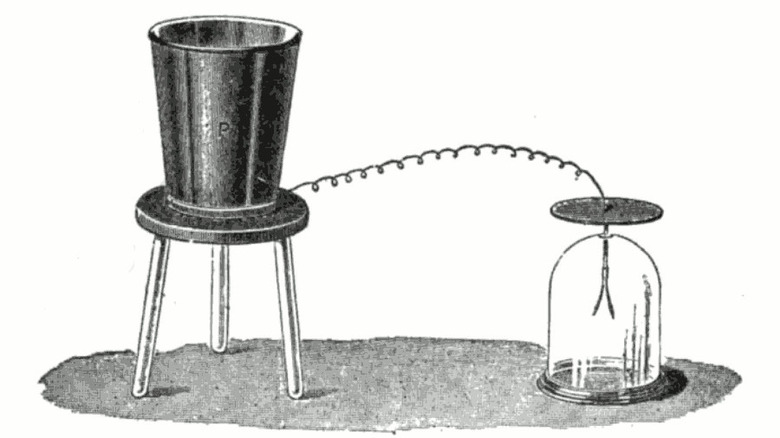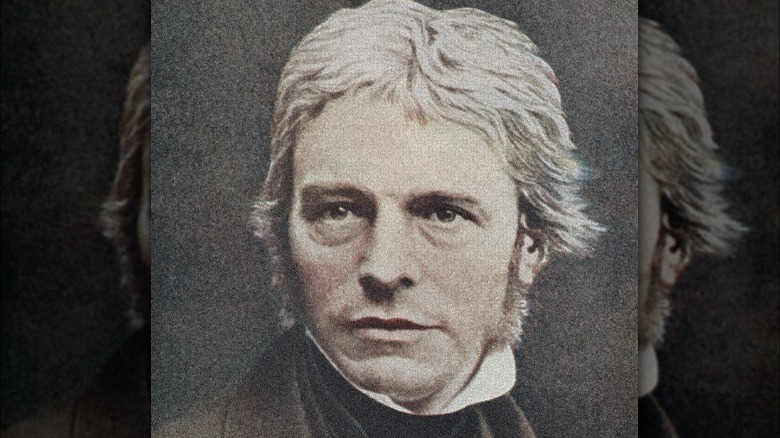How A Faraday Cage Works
The world is inundated with electromagnetic waves. They're inescapable. Our eyes are bombarded with them every moment they're open. They're flying through the air, passing through our bodies, bouncing off walls and ceilings, and manifesting themselves as Internet signals on our phones or voices on our radio. They're practically the foundation of 21st century life.
But sometimes we don't want them propagating all over the place. Sometimes we want to keep some of those waves out. This is especially true of things we want to protect from unwanted electromagnetic signals, like the RFID chips in our ATM cards and passports. To keep them safe, we turn to a 100-year-old technology called a Faraday cage (via Loss Prevention Magazine).
A Faraday cage is basically any enclosure made out of a conductive material. The material can be as complex as carbon fiber or as simple as chicken wire; as long as it conducts, we can make a Faraday cage out of it. What makes them special is that electromagnetic radiation outside of the cage — everything from radio waves to lightning bolts — has no effect on the inside.
How does it work?
To understand how a Faraday cage works we have to understand how metals and other materials conduct electricity. The outermost electrons in the atoms of conductive materials aren't tightly bound to their nuclei, so they're free to move around. The ability for the negatively charged electrons to move around is what allows a material to conduct electricity (via Interesting Engineering).
When an electrical field, like those created by a radio wave, interacts with a Faraday cage, it causes the electrons to move to one side of the cage, leaving one side with a negative charge, and the other with a positive charge. This polarity creates an electric field around the Faraday cage that cancels out the effects of the electric field outside the cage.
In addition to radio signals, Faraday cages can also block or redirect electrical discharges. That's why you never hear about airplanes being damaged when they're struck by lightning. Their metal bodies act as a Faraday cage, protecting the people and equipment inside (via ZME Science).
Where can I get one?
You may not realize it, but you almost certainly have a Faraday cage in your house right now. Microwaves work by bombarding your food with high-frequency radio waves called microwaves. Your microwave oven is designed as a Faraday cage in order to trap those microwaves safely inside. That's why the window has a metal mesh overlay (via HowStuffWorks).
If you still have cable television, the coaxial cable you plug into your cable box has copper shielding on it, protecting the wire within from external signals. The people who work on the power lines bringing electricity to our houses wear special clothes when working on the lines to lower their risk of getting shocked.
Governments use Faraday cages to protect vital infrastructure from lightning strikes and solar storms. Politicians use them to ensure private conversations by constructing entire rooms surrounded by metal mesh, preventing the use of wireless eavesdropping equipment (via Interesting Engineering).
The discovery
Michael Faraday had been conducting experiments into electrical induction since he first observed the phenomenon in 1831 (per Britannica). A few years later he set up an experiment involving a metal ball and a metal bucket that has come to be known as the Ice Pail Experiment (via The Open Door).
The experiment involved lowering a negatively charged metal ball into an uncharged metal bucket. The negative charge on the ball induced the electrons in the bucket to rearrange themselves, creating a positive charge on the interior of the bucket and a negative charge on the outside. When the ball was allowed to touch the inside of the pail, the interior positive and negative charges canceled each other out, but the exterior negative charge remained.
This wasn't only a demonstration of the principles of induction, it also showed that charges on the exterior of an object have no effect on the interior. It also showed that the interior of a conductive object can't have a net charge. He further demonstrated these principles by creating a 12-foot cube of wire mesh, stepping inside, and electrifying the exterior to 150,000 volts. No charge was recorded inside the cube and Faraday suffered no ill effects (via Proceedings of the American Philosophical Society).
Who was this Faraday?
Michael Faraday was born to a common family and apprenticed to a bookbinder in London. Here, he had access to the latest books on science being published and an acquaintance, knowing his love of all things science, gave him tickets to see a lecture by contemporary celebrity scientist Sir Humphry Davy (via BBC).
He worked out the basis of electrolysis, the process of depositing one metal onto another using electricity. He discovered that light can be manipulated by magnetic fields. And one of his most important discoveries — electrical induction — is fundamental to power transformers and electric motors.
Like his mentor, Sir Humphry Davy, he became a celebrity scientist in his own right. He was also instrumental in sharing science with the masses. While at the Royal Institution, he established the Friday Evening Discourses and the Christmas Lectures. Both continue to today and are important parts of disseminating the latest scientific information to the public (via Royal Institution).




